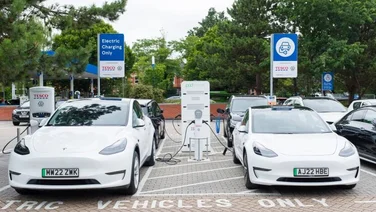- 224 million tonnes of organic carbon is stored in the top 10cm of the UK’s seabed
- 43% of this carbon is stored in Marine Protected Areas (MPAs)
- The UK has a commitment to protect 30% and restore 30% of nature by 2030

UK seabeds can capture up to 13 million tonnes of organic carbon per year
Environmental charities have urged the UK government to do more to protect the country’s marine environment after a study suggests there are 13 million tonnes of organic carbon stored in the seabed that could be used to get to net zero.
The Blue Carbon Mapping Project report estimates that in the top 10cm of the UK’s seabed sediment and vegetated habitats alone, 224 million tonnes of organic carbon is stored, 43% of which is stored in MPAs.
Conducted by the Scottish Association for Marine Science (SAMS) on behalf of a group of wildlife charities, including WWF, The Wildlife Trusts and RSPB, it is the first of its kind to map and estimate how much carbon is stored in a country’s seabed habitats, including in Marine Protected Areas (MPAs).
Tom Brook, blue carbon specialist at WWF UK, said the project reveals how critical seas are in regulating the climate and underscores the “urgent need” to protect and restore our seabed habitats.
“While saltmarshes and kelp forests punch above their weight in terms of capturing carbon, the mud really is the star here – accumulating and storing vast amounts on the seabed,” Brooks said.
“But we need to make sure it goes undisturbed for it to fulfil this critical function; harmful activities such as bottom trawling must be stopped.”
Kirsten Carter, head of UK marine policy, RSPB, said: “Accelerating efforts on land to tackle the nature and climate emergency is critical, but we must not underestimate the role of UK seas.
Carter described the report as a “game changer” for better understanding the marine environment and as “a huge asset for decision-makers” before urging the government to act on its findings.
“This means restoring habitats, properly planning offshore development, and investing in protected areas to safeguard wildlife and keep blue carbon locked up,” Carter explained.
SAMS has only researched the top 10 cm of sediment and so the actual carbon storage is much greater. Some sediments are 100s of metres thick and contain carbon from the past several thousand years.
Blue carbon stores are threatened by seabed disturbances, such as bottom trawling and offshore developments and charities have called for stronger measures to be put in place to protect the UK seas.
Disturbing these habitats can release large amounts of carbon into the atmosphere, which worsens climate change and threatens biodiversity.
Forests in the UK cover roughly 32,500 km² and can sequester up to 4.8 million tonnes of organic carbon annually. Seabed habitats cover nearly 885,000 km², three times the size of the UK’s landmass, and could capture up to 13 million tonnes.
UK governments have already championed the creation of the convention on Biodiversity’s Global Biodiversity Framework, which has a 30×30 commitment to protect at least 30% and restore at least 30% of nature by 2030.
The target is intended to directly protect and prioritise areas of biodiversity and areas important for the continuation of ecosystem functions.
The WWF, The Wildlife Trusts and RSPB want to improve strategic planning of activities in UK seas through blue carbon assessments, where blue carbon is always a consideration in marine plans.
This would involve more investment and research on blue carbon, with funding allocated to restoring habitats, monitoring of blue carbon dynamics, and adding seagrass and saltmarsh to the Greenhouse Gas Registry to track emissions.
The charities are also looking to support transition in the fishing industry away from fishing techniques that damage the seabed.
Joan Edwards, director of marine policy for The Wildlife Trusts, said: “These world-first reports reveal the enormous value of UK seas, while highlighting that many areas need far better protection.
Edwards urged “strategic decision-making from policymakers” to recognise the value of blue carbon by minimising the impact of human activities on the seabed.
He claimed that damaging activities such as bottom trawling and large development must not take place in protected areas.
“This research gives the UK an opportunity to lead the world in protecting blue carbon and marine biodiversity.”







